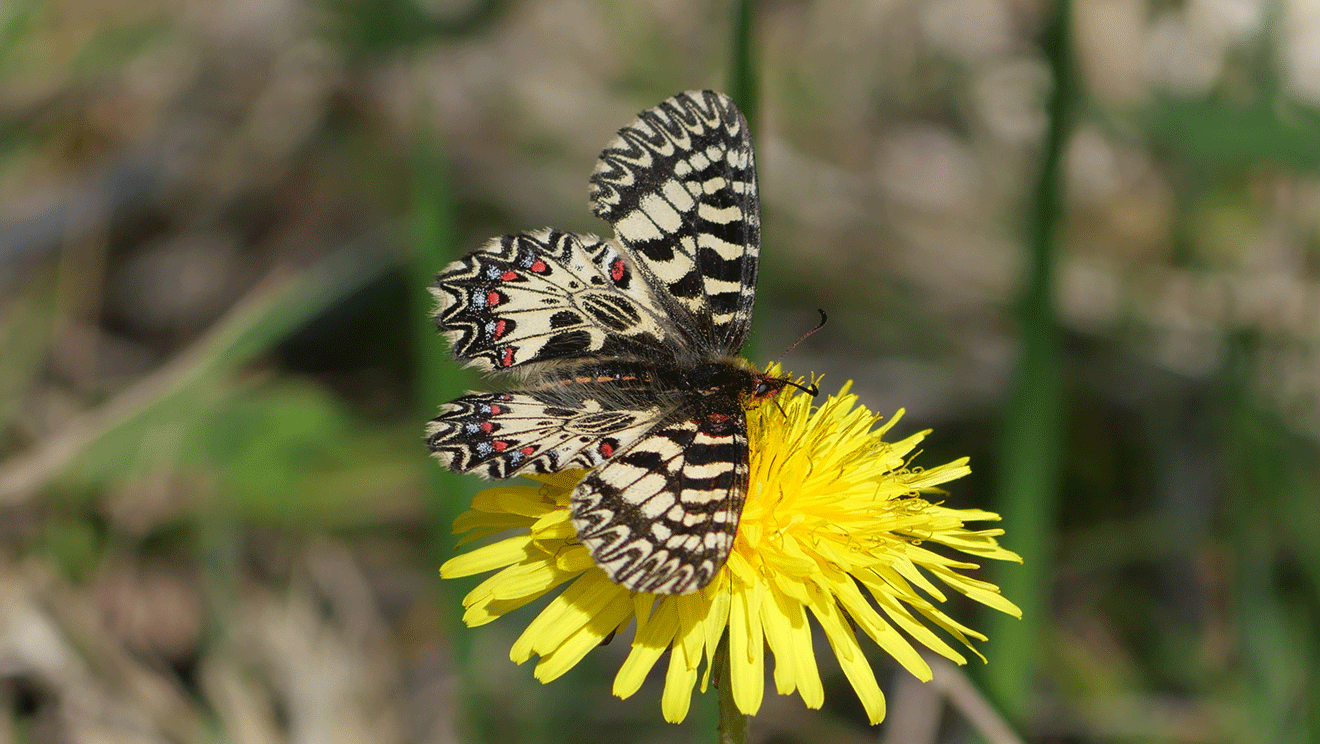The Southern Festoon Zerynthia polyxena and its host plant form an emblematic pair. Found in the Mediterranean wetlands, the Southern Festoon is a striking butterfly with pale yellow wings marked with black stripes and red and blue dots. A protected species in France, medium-sized (4 to 5 cm wingspan), adults are on the wing from mid-March to the end of May. It’s highly vulnerable because the caterpillars eat only one plant: Aristolochia.
Aristolochia is a perennial plant 20 to 60 cm high that thrives on the banks of watercourses and grassy ditches. The female Southern Festoon lays her eggs exclusively under the leaves of this plant, on which the caterpillars subsequently feed. Aristolochia contains a highly toxic compound that protects it from herbivores but the Southern Festoon caterpillars and adult butterflies are resistant to it. The toxin accumulates in the caterpillars, turning them into unpalatable prey, even when adult butterflies. A helpful outcome – for the Southern Festoon!
The population distribution is very localized and clearly linked to that of Aristolochia, making protection all the more targeted. Aristolochia habitat can be threatened by urbanization, wetland drainage, expansion of agricultural land or intensive scrub clearance. A Rocha France is delighted that two sites they manage in the Vallée des Baux marshes (south of France) host two Southern Festoon populations.
Since 2012, the team has undertaken annual population monitoring of the Southern Festoon, looking to understand the population dynamics and the effect of management measures put in place. The team uses a census protocol based on the Capture, Marking and Recapture (CMR) of individuals, according to the specific rules of working with a protected butterfly species. Each butterfly is given a unique mark so it can be identified by binoculars or re-captured. Management measures are also in place, such as late mowing, to encourage the development of Aristolochia while limiting the risks of destroying caterpillars.
This year, the first Southern Festoon adult butterflies were observed on 12 March, slightly earlier than other years. Data analysis will reveal the effect of management and climatic events on population dynamics – such as the 2024 flooding that occurred at one of the sites, resulting in much lower populations. The team will be looking at the accumulated years of data to consider trends and impact – stay tuned for findings!



